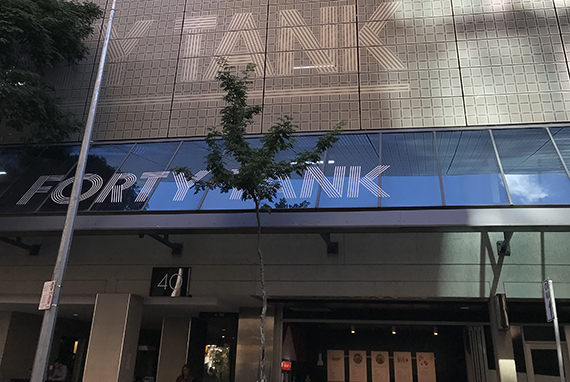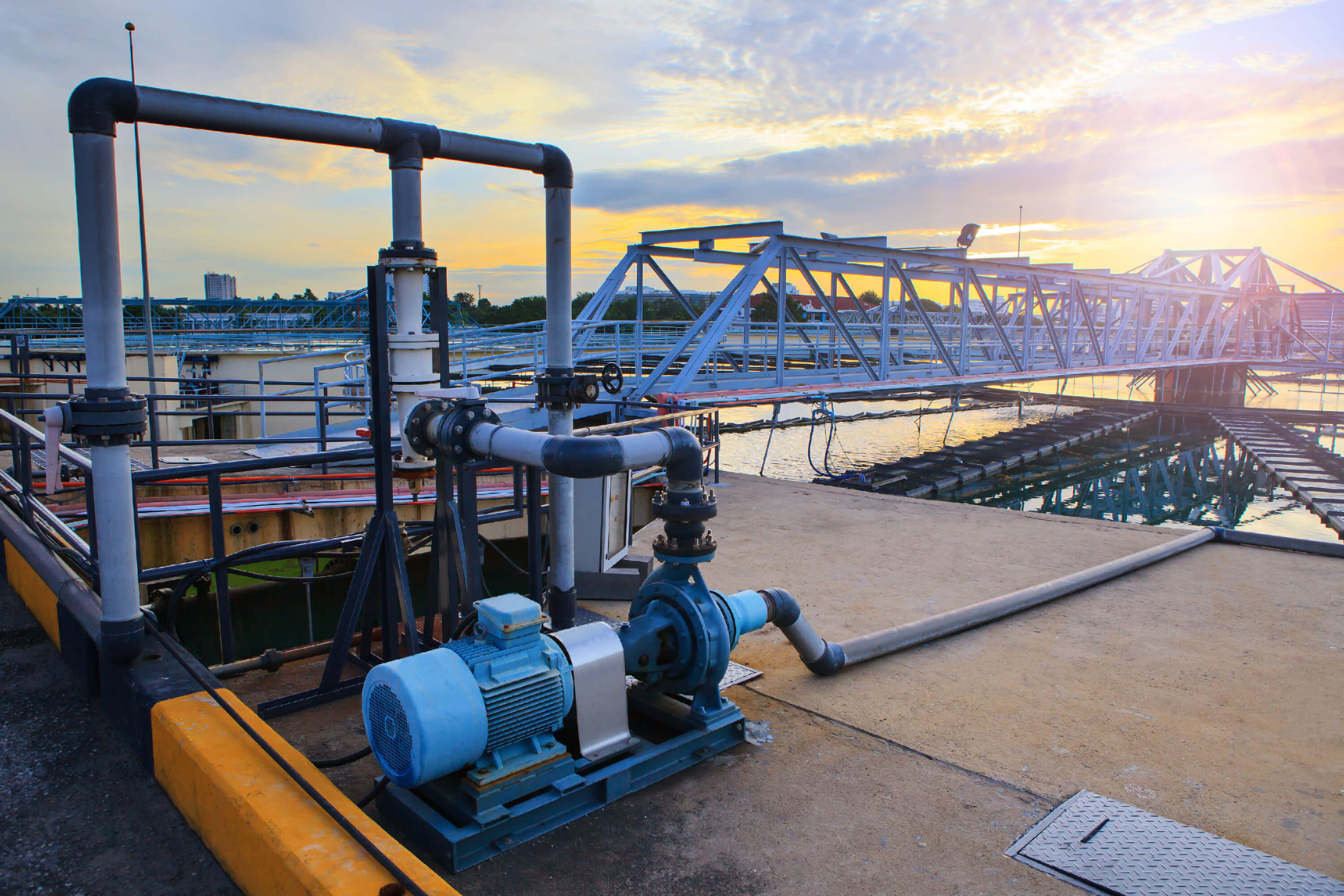Harmonics mitigation is most cost-effective when "designed in".
Mitigation in existing installations is possible but more than likely to cost significantly more without the performance of an "ab initio" approach.
Good reasons for designing-in harmonics mitigation relate to economy, performance and reliability. All three of the following reasons have dollar implications.

Economy
Harmonics cause energy to be wasted. Someone has to pay for this and supply authorities have reflected this in general tariffs. Expect this to end as increasing Federal and State political pressure to limit cross-subsidisation in electricity tariffs, forces supply authorities to penalise industrial and commercial consumers straining the poles and wires.
Performance
Harmonics degrade the performance of equipment sensitive to power quality causing productivity losses, expenditure in service, and additional capital expenditure in replacing life-span compromised equipment such as motors.
Reliability
The electrical reticulation network inside a building or factory has to be 100% available. Interruption because of breakdowns including false tripping of protective gear has severe cost implications and loss of profits through production interruption.
Harmonic mitigation solutions should be tailored to the type of application. In many ways each installation is unique but broad guidelines apply.
Commercial Premises
The three-phase loads are generally HVAC, moving walkways and escalators, and elevators. HVAC plant generates significant harmonics.
Single-phase loads usually provide the highest aggregate harmonic load. Primary sources are IT equipment, and lighting ballasts. Load balancing for single-phase circuits is an important design consideration when there is high harmonic content. Two-phase loads are less frequent but might be reserved for some commercial kitchens.
Changes in tenancies, and expansion of facilities (more offices, shops, etc) can overload the reticulation because of increases in harmonic content. The capacity of a sub-station transformer can easily be surpassed unless harmonic mitigation has been installed.

Industrial Plants
Many loads are three-phase, three-wire. Sub-station transformers are likely for large consumers connected to medium voltage distribution and plant expansion can challenge the sub-station beyond capacity.
Single-phase loads in aggregate are likely to be less than three-phase loads. Careful consideration of circuit and load mitigation will provide high power quality (eg: mitigation of negative sequence harmonics, commutation notching from converters) and allow control gear (PLCs, micro-controllers, industrial bus systems) to operate from clean supply.
Power factor is often low or variable due to loading and unloading of motors. Consideration of power factor control in combination with harmonic mitigation is important and best done at the design phase.

Voltage distortion at the point of common coupling
Harmonics mitigation adds cost to electrical installations and for that reason is often ignored. Sometimes a ‘suck it and see’ policy is adopted.
Harmonics are not just an internal problem. They are exported into the supply system in spite of interposing transformers—even the ubiquitous third harmonic, since installations are never phase-balanced.
If the supply authority complains about the degree of voltage distortion at the point of common coupling (pcc) harmonic filtering might be specified. Note that the relevant standard for harmonic voltage distortion in Australia is AS/NZS 61000.3.6. Supply authorities can insist on their own maximum voltage distortion levels.

Substation transformers affected by harmonics
Consumers who buy electrical energy at medium rather than low voltage will have a sub-station transformer which may or may not owned by them but the problems caused by harmonics will be owned by them. Harmonics can severely de-rate the transformer and it is not an exaggeration that in Australia not much attention has been paid to ‘harmonics-hardened’ transformers. Eddy current losses, proportional to the square of both the amplitude and harmonic frequency will shorten transformer life span.
Wiring losses and reliability
Proximity and skin effects in conductors due to harmonics will often increase energy losses well in excess of the I2R losses at the fundamental frequency (50 Hz). These additional losses can wreck switchboards, overload conductors including neutrals and cause voltage distortion in the customer’s installation. Reliability of protection is affected. Magnetically tripped breakers can be tripped through severe current distortion (very high peak current) and thermally tripped breakers through the heating effects of harmonic current components. Harmonics can therefore upset coordination of protective gear. Residual current devices (RCDs) can also malfunction.
Design Rules
Energy waste in the reticulation system is best avoided by harmonics mitigation as close to the harmonics generating sources as possible. Economies can be achieved by aggregating some harmonics generating loads for example variable speed drives. Large rating loads are often best connected on separate circuits. Single-phase loads are generally most economically mitigated at sub-distribution board level using three-phase, 4-wire harmonic filters (active filters are recommended for high variability loads).
Neutral current compensation can be a problem in the case of unbalanced phases, and zero sequence (3rd, 9th, etc) harmonic compensation best achieved on a per phase basis. Transformer selection for sub-stations should be on the basis of having a line diagram of the installation with predicted harmonic content available. For installations with stand-by generators, mitigation filters should avoid creating leading power factors. For installations using passive capacitor-bank displacement power factor correction, detuning chokes have to be employed to avoid resonance problems.
We're here to help
Talk to an expert today.
Our friendly team of highly trained specialists will quickly assist you.
We promise to respond within 4 business hours (AEST).
Or you will receive $100 off your next purchase. Read how it works.

Lowest Price Guarantee
If you find a cheaper advertised price for an identical item, we will beat that price by 10%! How it works.

Reply in 4 Hours

Satisfaction Guarantee
If you are not satistfied with your purchase, return it. Read our
Top FAQs
VIC - HEAD OFFICE / WAREHOUSE
27 Viking Court
Cheltenham VIC 3192
NSW - SALES OFFICE / WAREHOUSE
29/8-10 Barry Road
Chipping Norton NSW 2170
QLD - SALES OFFICE
1 / 26 Duke Street
Sunshine Beach QLD 4567
WA - SALES OFFICE
67 Howe Street
Osborne Park WA 6017
We'd love to hear from you! At Fuseco, rather than publish generic prices, we prefer to give you an individual quote. This ensures that we provide you with the best possible pricing to meet your needs.
The quickest way to place an order is to give our customer service team a call or send us an email. We promise to respond within 4 hours or you get $100 off your next order, however we usually respond within 1-2 hours to email enquiries. So go ahead and speak to us, we'd love to help you with your needs.
Fuse Products
- For all orders over $100 (excl. GST & freight), freight is FIS (Free into Store).
- For all orders under $100 (excl. GST & freight), a freight charge of $25 + GST is applicable.
- Additional fees may apply for deliveries to the Northern Territory and remote areas.
All Other Products
- Freight charges POA (Price on Application)
- FOT (Customer nominates own carrier and accepts all charges)
In simple terms, harmonics are extra frequencies that when present in an electrical circuit, distort the AC sine wave. A harmonic of a wave is a component frequency of the signal that is an integer multiple of the fundamental frequency. For example, if the fundamental frequency is f, the harmonics have frequencies 2f, 3f, 4f... etc.
Harmonic frequencies are equally spaced by the width of the fundamental frequency and can be found by repeatedly adding that frequency. In the case of the Australian electricity supply, the fundamental frequency is 50Hz. The frequencies of the harmonics are 100Hz, 150Hz, 200Hz, 250Hz, 300Hz, 350Hz and so on.
For electrical systems to function in their intended manner without significant loss of performance or life, they require a supply of electricity that is of good quality. Good quality electrical power has the following characteristics:
- It must have a continuity of service (not be interrupted).
- It must have a very low Harmonic content.
- It must have a very low variation in the voltage magnitude.
- It must have very low transient voltages and currents.
The term 'clean power' is used to describe electricity that is considered to be of good quality (see above) with particular reference to a very low harmonic content. Therefore, the term 'dirty power' is used to describe electricity that is considered to be of low quality (opposite to the above) with particular reference to a very high harmonic content.
In Australia, our electricity is supplied in alternating current at a frequency of 50Hz. In alternating current (AC) the movement of electric charge periodically reverses direction. In direct current (DC), the flow of electric charge is only in one direction. 50Hz means that the AC has a frequency of 50 cycles per second. This is also known as the 'fundamental' frequency. AC is the form in which electricity is delivered to businesses and residences. Most electrical devices (such as motors) need clean electricity to function properly. This means that the electrical supply needs to be a clear sinusoidal wave.
If you occasionally experience some unexplained occurrences such as flickering lights, alarms going off, or MCB's, MCCB's, RCD's and Earth Leakage devices tripping for no apparent reason, you are most likely experiencing harmonics in your electrical environment. Other signs are cables running hot, hot switchboards or overheating motors. If you are replacing your motor's bearings & insulation often, that's a strong indication of the presence of harmonics.
Learn more
Harmonics are very harmful within an electrical system and can have serious consequences. For example, the presence of harmonics reduces the life of equipment. It is possible that the investment that you made in your motors & drives will not be realised if they are damaged and need replacing before their expected life span. This can be very expensive. Harmonics cause things to run hot, which cause stress on the cables and equipment.
In the long term, this degrades an electrical system. The presence of harmonics will also mean that although you will get billed for the power that you are supplied, a large percentage of that power may be unusable. Harmonic mitigation is taking action to minimise the presence of harmonics in your electrical system and can achieve great cost savings.
Variable Speed Drives (also known as Variable Frequency Drives) are prolific creators of harmonics in electrical systems and as a result, most of the harmonic mitigation effort focuses on the input side and output side of a VFD.
Depending on the specific situation, there are a variety of products that are used to mitigate harmonics. Fuseco's Power Quality Consultants can assist by conducting a site analysis or simply providing advice based on the details of the particular electrical system. Here is a brief summary of the product groups:
Line (input) side of the VSD
Device Features:
- Line Reactors Simple & cost-effective method to reduce harmonics. Available in 3% & 5% versions.
- Passive Harmonic Filters Significantly reduces harmonics from the VSD back out to the system and also improves true power factor.
- Meets the IEEE519 Standard.
- Active Harmonic Filters Active filters inject a 180 degree inverse current to nullify the harmonic content going back out to the system. They mitigate harmonics, compensate for voltage dips & can handle multiple VSD's relative to the reactive power required. Meets the IEEE519 Standard.
Load (output) side of the VSD
Device Features:
- Load Reactors Simple & cost-effective method to reduce harmonics. Available in 3% & 5% versions.
- dV/dT Filters dV/dT filters have been designed to limit peak voltage and increase voltage rise time. In addition to mitigating harmonics, the dV/dT filter also clips voltage spikes.
- Sinewave Filters The ultimate load side harmonic mitigation product. Filters all harmonics, including reflective currents, eddy currents, common mode currents. Can be used for long cable runs (many kms). Stops the heating of cables. Great for the longevity of motors.
knowledge centre

It’s been a pleasure working with Fuseco on this project. Initially, we thought that the power quality issues on this job were insurmountable. Fuseco conducted a power quality site audit and consulted with us to find a suitable solution that would work reliably in this challenging environment. The reactors and harmonic filters specified & supplied by Fuseco have been the perfect solution.
Peter Carney
ELECTRICAL ENGINEER AT SIEMENS

Just wanted to say thank you again to the Fuseco team. When presented with an electrical harmonics problem of this nature, I wasn’t sure how to approach it. You guys explained it in logical, scientific terms and expertly demonstrated the capability of your technology. It is now one month post-installation and I can say that the Active Filter is working well and the harmonics levels on this site are now negligible.
John Ulverstone
ELECTRICAL ENGINEERING AT BHP
Technical Support
Our experts are all pre-eminent leaders in electrical products who provide excellent support in their areas of expertise.
Technical supportTalk to an expert
Our friendly team are highly trained product experts who really enjoy helping customers find what they need.
call 1300 387 326Enquire by email
We promise to respond within 4 business hours (AEST) or you will receive $100 off your next purchase.
Enquire now